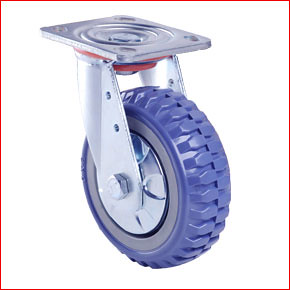Choosing the right industrial wheels is crucial for equipment mobility and workplace safety. It ensures the wheels can handle the weight and nature of the load and that they’re compatible with the floor.
Casters are available in various sizes, styles, and materials, with numerous swiveling, braking, and locking options. Choosing the correct ones from the start will save time and money.
Load Capacity
The load capacity of caster wheels is an essential factor affecting maneuverability and durability. It depends on the material used and how the wheel is constructed. Choosing a caster wheel with a higher load capacity will allow it to handle heavier loads without sacrificing maneuverability.
The casters have versatile mounting options, including top plate and stem mounts. Choose the mounting type that best matches your equipment’s structure. Stem fastening types include threaded and grip ring stems. The wheels are compatible with most standard furniture and equipment frames. They are safe for most floor types and move quietly so that you can work uninterrupted.
Diameter
Aside from load capacity, the diameter of a caster wheel determines maneuverability. 5-inch caster wheels are better suited for rough surfaces, while smaller ones are suitable for indoor and confined spaces. The tread pattern also affects traction. A donut tread offers cushion, debris resistance, and noise reduction, while flat or slightly crowned treads handle more weight.
A swivel radius also plays an important role. This feature decreases the effort to move equipment and turn it in tight corners. This reduces maintenance, downtime, and workforce injuries.
Aside from enhancing performance, quality caster wheels can help your hospital maintain its esteemed reputation. For instance, installing poor-quality casters on an advanced ultrasound machine can leave patients with a negative view of your hospital. Installing cutting-edge casters on the device can make it look professional and modern and enhance patient satisfaction. This will also give your hospital a positive image and boost its credibility as an institution that delivers top-of-the-line medical services.
Material
Choosing the wheel material is essential to ensure durability and suitability for your equipment. Caster wheels are available in various materials, including rubber, polyurethane, nylon, and metal. Consider the environment and conditions in which your equipment will be used to determine the best wheel type for your needs. For example, a smooth wheel is ideal for indoor environments with smooth surfaces, while treaded wheels provide better traction and maneuverability on rough or uneven floors.
Some caster wheels are also nearly noiseless, helping to reduce noise pollution in hospital hallways and rooms. This can help calm patients and expedite patient recovery. Other caster wheels have locking mechanisms to prevent movement, which can help stabilize medical equipment and keep it stationary. Many casters are also NSF-rated, making them suitable for food service areas or manufacturing facilities. This means they can be cleaned without damaging the wheels or exposing workers to hazardous chemicals.
Mounting
Choosing the proper caster wheels isn’t always easy. A huge range of sizes, styles, materials, swiveling, braking, and locking options exist. It is essential to know how each one can impact your application.
The facility in which the equipment will be used can make a difference in what wheel type and material is best. Softer floors may require softer wheels, while more complex surfaces can handle hard-wearing materials.
Rigid casters have the advantage of extreme maneuverability and are suitable for narrow aisles, but they don’t brake well on inclined floors or allow for steering. Swivel casters provide smooth mobility in all directions and come with either a total lock brake that stops both swiveling and rotation or partial lock brakes that stop only swiveling movement.

